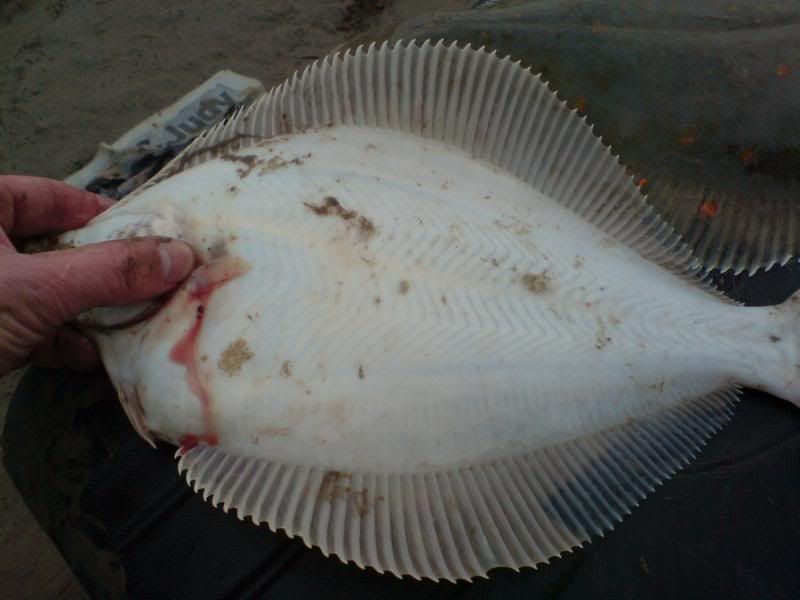
We have some exciting news from Gerrys of Morecambe as we are proud to welcome Read more →
Three of the commonest flatfish found in UK waters are the Plaice, the Flounder and the Dab. Occasionally anglers get the identification of these closely related species confused with one another. However, there are distinguishing characteristics which when added to the anglers knowledge base, and with a bit of practice, can make identification that bit easier.
Plaice
Plaice can be identified by their conspicuous vivid orange or red spots. These are quite easily distinguished from the dull reddish spots occasionally found on Flounders, which are sometimes mistaken for Plaice.

The Plaice body shape is oval, with the end of its tail noticeably rounded and quite small in proportion to its body……..

The bony ridge behind the eyes, seen here clearly in this photo, is another characteristic for Plaice….

The underside of the Plaice is white with an opaque herringbone pattern visible

Flounder on the left showing the more ‘solid’ white underside, the Plaice on the right showing the opaque herringbone pattern which is a characteristic of the species

Flounder
The humble and much maligned Flounders’ appearance could be described as crude and less ‘delicate’, with its large broad tail and big head. Its flesh can often appear ‘flabby’ compared to the Plaice. Its colour ranges from dull brown to almost dull mottled green with occasionally muted red spots apparent. It’s body shape is also longer and more elongated in comparison to the Plaice and Dab…..

Its head lacks the conspicuous bony ridge behind the eye of the Plaice

Its tail is large and flat ended, noticeably bigger in proportion to its body than that of the Plaice.


Dab
The easiest characteristic to tell a dab from its cousins is its rough skin when rubbed from its tail to head, when rubbed from its head to tail it feels smooth like other flatfish….

It also has a pronounced ‘hump’ or ‘bulge’ in its lateral line above the pectoral fin…

The eyes of a dab are larger in proportion to its head compared to its flatfish cousins…

The underside is almost all opaque with a more solid white patch where its intestinal cavity is…

Conclusion
The Plaice is smooth all over no matter which way you rub it, it has a bony ridge on its head behind the eyes which follow the line of its lateral line, it has vivid orange spots and the herringbone pattern on its underside.
The Flounder is smooth all over, apart from when its lateral line is rubbed from tail to head which will feel rough. It is dull in colour and the occasional spots will be a dull red. It has a large broad flat edged tail and the underside is solid white in appearance.
The Dab is smooth when rubbed from head to tail but rough all over its body when rubbed from tail to head. It has a pronounced bulge in its lateral line and has large eyes in proportion to its head. The underside is opaque white apart from a more solid white patch where its intestinal cavity is visible.






Pingback: Middle Docks - Page 2 - North East Sea Angling : NESA : Sea Fishing Forums
Pingback: Blyth Pier 3/12 - North East Sea Angling : NESA : Sea Fishing Forums
Pingback: hampton live - Page 2- World Sea Fishing Forums | Sea Angling and Sea Fishing Online | Fishing Reports
Pingback: Nice morning at hebburn - North East Sea Angling : NESA : Sea Fishing Forums
Pingback: Brighton Marina East Arm - 07/04/2013- World Sea Fishing Forums | Sea Angling and Sea Fishing Online | Fishing Reports
Pingback: Debated whether to bother or not.... - Page 2- World Sea Fishing Forums | Sea Angling and Sea Fishing Online | Fishing Reports